Related Research Articles

Harriet Elisabeth Beecher Stowe was an American author and abolitionist. She came from the religious Beecher family and became best known for her novel Uncle Tom's Cabin (1852), which depicts the harsh conditions experienced by enslaved African Americans. The book reached an audience of millions as a novel and play, and became influential in the United States and in Great Britain, energizing anti-slavery forces in the American North, while provoking widespread anger in the South. Stowe wrote 30 books, including novels, three travel memoirs, and collections of articles and letters. She was influential both for her writings and for her public stances and debates on social issues of the day.
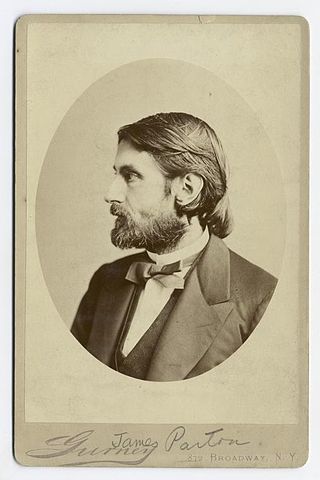
James Parton was an English-born American biographer who wrote books on the lives of Horace Greeley, Aaron Burr, Andrew Jackson, Benjamin Franklin, Thomas Jefferson, Voltaire, and contributed three biographies to Eminent Women of the Age.
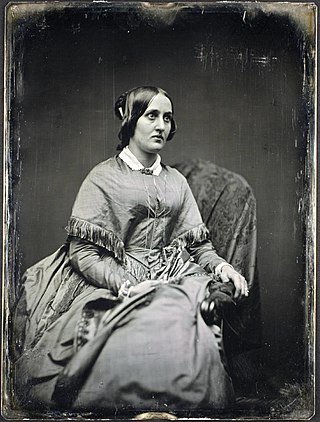
Sara Jane Lippincott was an American author, poet, correspondent, lecturer, and newspaper founder. One of the first women to gain access into the Congressional press galleries, she used her questions to advocate for social reform and women's rights.
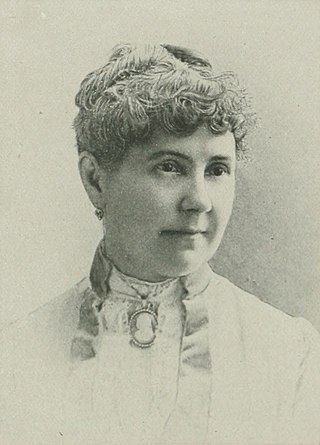
Sarah Knowles Bolton was an American writer. She was born in Farmington, Connecticut. In 1866, she married Charles E. Bolton, a merchant and philanthropist. She wrote extensively for the press, was one of the first corresponding secretaries of the Woman's National Temperance Union, and was associate editor of the Boston Congregationalist (1878–81). Bolton traveled for two years in Europe, studying profit-sharing, female higher education, and other social questions. Her writings encouraged readers to improve the world about them through faith and hard work.

Harriet Elizabeth Prescott Spofford was an American writer of novels, poems and detective stories. One of the United States's most widely-published authors, her career spanned more than six decades and included many literary genres, such as short stories, poems, novels, literary criticism, biographies, and memoirs. She also wrote articles on household decorative art and travel as well as children's literature.

Harriet Thayer Durgin (1843–1912) was a pioneering 19th-century American artist from the U.S. state of Massachusetts, who specialized in water colors and sketches of landscapes and still-lifes focused on botanical motifs. After studying in Paris, where she received special notice in the Salon of 1886, she shared a studio in Copley Square, Boston, with her sister, the muralist, Lyle Durgin. Durgin is remembered as one of the foremost American artists of the floral-painting genre during the late 19th and early 20th centuries.

Esther Pugh was an American temperance reformer of the long nineteenth century. She served as Treasurer of the National Woman's Christian Temperance Union (WCTU), a Trustee of Earlham College, as well as editor and publisher of the monthly temperance journal, Our Union.

Hattie Tyng Griswold was an American author of the long nineteenth century. She wrote many stories, sketches, and poems. Born in Boston, Griswold relocated with her family to Columbus, Wisconsin, in 1850, where, in the course of time, she married, raised her children, and did much of her work as an author. Her home was a meeting place of many of the notable people of the day, for she had an extensive personal acquaintance with literary and other celebrities. The books by which she is best-known are: Apple Blossoms, Waiting on Destiny, Lucile and Her Friends, and The Home Life of Great Authors. "Under the Daisies" is one of her best-known poems. She wrote stories for the Home Journal of New York, The Knickerbocker, Madison State Journal, Old and New, The Christian Register, and Boston Commonwealth. Griswold served as president of the Woman's Christian Temperance Union in her locale.

Annie Maria Barnes was a 19th-century American journalist, editor, and author from South Carolina. At the age of eleven, she wrote an article for the Atlanta Constitution, and at the age of fifteen, she became a regular correspondent of that journal. In 1887, she began publishing The Acanthus, a juvenile paper issued in the South. Barnes published novels from 1887 until at least 1927.
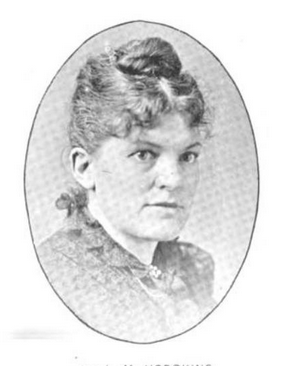
Louise Manning Hodgkins was an American educator, author, and editor from Massachusetts. After completing her studies at Pennington Seminary and Wilbraham Wesleyan Academy, she became a teacher and preceptress at Lawrence College, before receiving a Master of Arts degree from that institution in 1876. She taught at Wellesley College for over a decade before turning her attentions to writing and editing. Her main works included Nineteenth Century Authors of Great Britain and the United States, Study of the English Language, and Via Christi. She served as editor of The Heathen Woman's Friend, the first organ of the Woman's Foreign Missionary Society of the Methodist Episcopal Church, and also edited Milton lyrics : L'allegro, Il penseroso, Comus, and Lycidas and Matthew Arnold's Sohrab and Rustum. She died in 1935.

Harriet Newell Kneeland Goff was an American temperance reformer and author. For many years, she was a contributor to the public press, and three books followed, Was it an Inheritance? (1876), Other Fools and Their Doings, Or, Life Among the Freedmen (1880), and Who Cares (1887). She was elected Right Worthy Grand Vice-Templar of the British branch in the rupture of the International Organisation of Good Templars. She was an international temperance lecturer beginning in 1870, and for six years, her especial work was for the employment of police matrons in Brooklyn, New York. Goff was the first woman ever placed upon a nominating committee to name candidates for the presidency and vice-presidency of the United States.

Jennie Fowler Willing was a Canadian-born American educator, author, preacher, social reformer, and suffragist. She married a lawyer and Methodist pastor at age 19. In 1873, she and her husband became professors at Illinois Wesleyan University. In addition to teaching, she was a leader in the temperance movement. Willing came to notice when she joined the Illinois Woman's State Temperance Union, serving as its leader for some years. She and Emily Huntington Miller were involved with creating and presiding over the First Woman's National Temperance Convention of 1874 in Cleveland where the National Woman's Christian Temperance Union was formed. She served as the editor of the national organization's journal for a period. In 1895, she created the New York Evangelistic Training School. Willing wrote several books including From Fifteen to Twenty-five: A Book for Young Men and serials for newspapers.

Minnie Willis Baines was an American author. She favored temperance, morality, religion, and women's suffrage, writing innumerable short stories and poems in magazines and papers from the age of fourteen. Her most notable works were The Silent Land; His Cousin, The Doctor;The Pilgrim's Vision; and Mrs. Cherry's Sister. Baines-Miller died in 1923.

Harriet Mabel Spalding was an American litterateur and poet. She became well known in the highest circles of art and literature in Albany, New York, Chicago, and New York City.
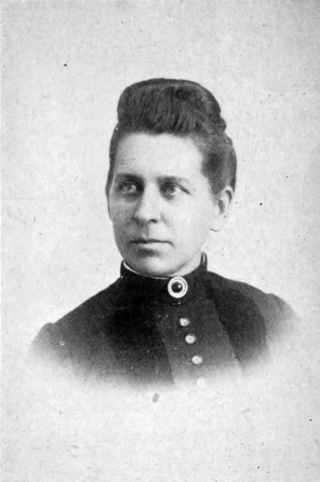
Cornelia Moore Chillson Moots was an American missionary and temperance evangelist. She was one of four pioneer missionaries of the Woman's Foreign Missionary Society of the Methodist Episcopal Church.
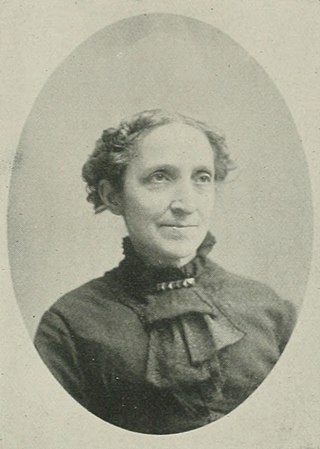
Mary Helen Peck Crane was a 19th-century American church and temperance activist, as well as a writer. She was the mother of the writer, Stephen Crane. She died in 1891.
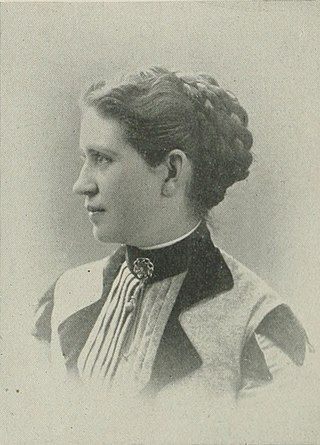
Louise Reed Stowell was an American scientist, microscopist, author, and editor. She was the University of Michigan's first woman teacher (1877–89), and the first woman appointed on District of Columbia Public Schools. She also served on the Board for the Girls' Reform School for District of Columbia. Stowell died in 1932.
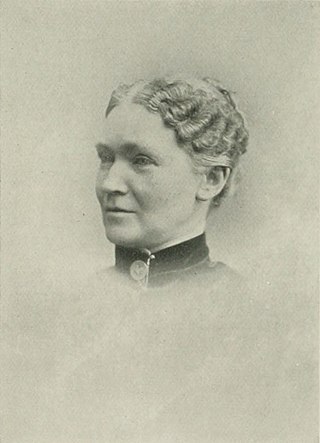
Emily Caroline Chandler Hodgin was an American temperance reformer. She was one of the leaders in the temperance crusade of Terre Haute, Indiana, in 1872, and was a delegate to the convention in Cleveland, Ohio, where the crusading movement developed into the organization of the Woman's Christian Temperance Union (WCTU). After that, she began the work of organizing forces in neighboring parts of Indiana. She became president of the WCTU in her own county and secretary of the State temperance association. She greatly aided the cause from the lecture platform, for though a member of the Society of Friends, she availed herself of the freedom accorded to the speaker in meetings.
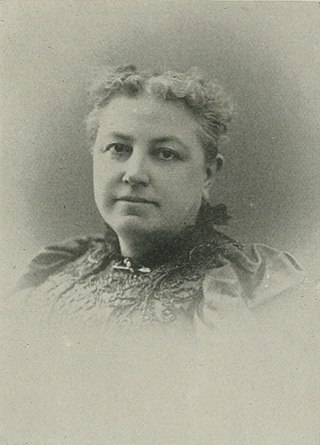
Alice E. Heckler Peters was an American social reformer, educator, writer, and poet. She was involved in several women's religious, reform and social organizations of her era including the Woman's Christian Temperance Union (WCTU), Woman's Foreign Missionary Society of the Methodist Episcopal Church, National American Woman Suffrage Association, and the Woman's Relief Corps. Her poetry was a valuable addition to American literature.

Euphemia Johnson Richmond was an American litterateur and author of novels and children's literature. Her early sketches, published in periodicals, were under the pen name, "Effie Johnson", but her later work was under her own name styled as "Mrs. E. J. Richmond".
References
- 1 2 Curry, Daniel, ed. (November 1887). "Editorial Miscellany". The Methodist Review. New York: Phillips & Hunt. 69: 951.
- 1 2 "Book Notices". The Sunday School Journal. Methodist Publishing House. 19 (11): 362. November 1887. OCLC 1772990.
 This article incorporates text from this source, which is in the public domain .
This article incorporates text from this source, which is in the public domain . - 1 2 Apple, Thomas G.; Titzel, John M., eds. (1888). "Notices of New Books". The Reformed Quarterly Review. Philadelphia: Reformed Church Publication Board. 35 (3): 401–02.
 This article incorporates text from this source, which is in the public domain .
This article incorporates text from this source, which is in the public domain .